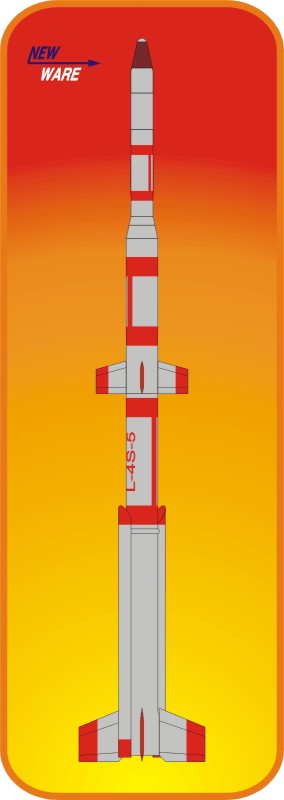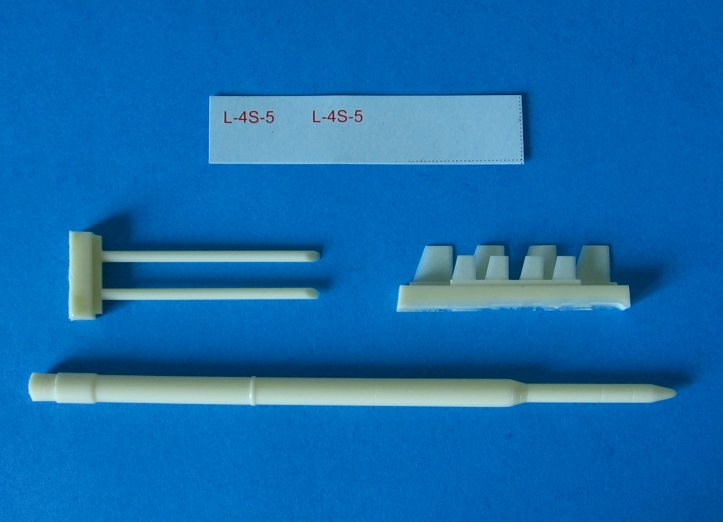 NW061 1/144 L-4S (Lambda-4S) First Japan
Satellite Launch Vehicle
NW061 1/144 L-4S (Lambda-4S) First Japan
Satellite Launch Vehicle NW061 1/144 L-4S (Lambda-4S) First Japan
Satellite Launch Vehicle
NW061 1/144 L-4S (Lambda-4S) First Japan
Satellite Launch Vehicle


The L-4S rocket was the first rocket developed by Japan to
launch a satellite into orbit. The launch vehicle was similiar to
a very large sounding rocket. All four stages and both strap-on
boosters were powered by simple solid rocket motors. The first
two stages were unguided, fin stabilized rockets, and the third
stage was spin stabilized. The fourth stage, which was the
satellite, consisted of a few diagnostic instruments powered by a
small spherical rocket engine. As a result of its simple
construction, the L-4S was the least expensive space booster in
the world.
The first four launches ended all in failures. On February 11,
1970, the fifth Lambda-4S took off from Kanageshima Space Center.
The booster launched the Oshumi satellite (named for the
peninsula from which it was launched) to into orbit. The
satellite consisted of the fourth stage rocket engine and nine kg
of instruments including thermometers, accelerometers and
transmitters. Oshumi had a highly elliptical orbit, ranging in
altitude from a perigee of 337 km to an apogee of 5151 km. Oshumi
transmitted data for only the first seven 144-minute orbits.
The Lambda rocket was never meant as an operational launch
vehicle. The L-4S/Oshumi launcher proved the techniques utilized
in orbiting satellites with the Mu booster.